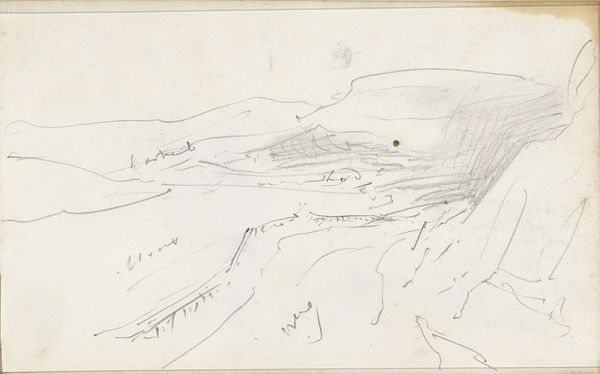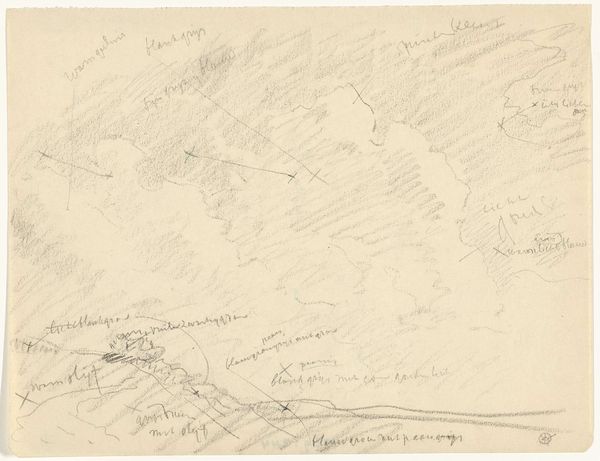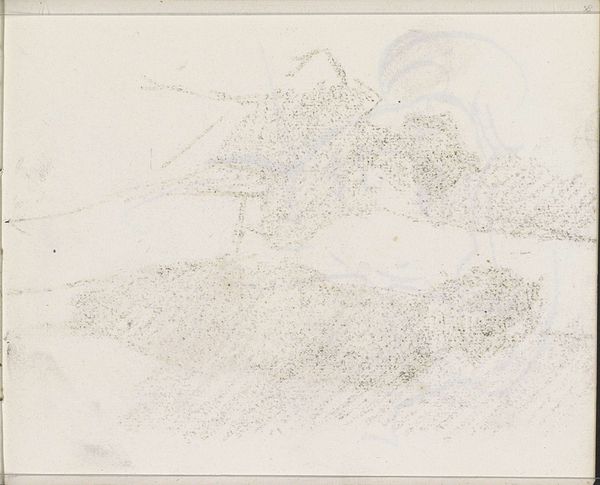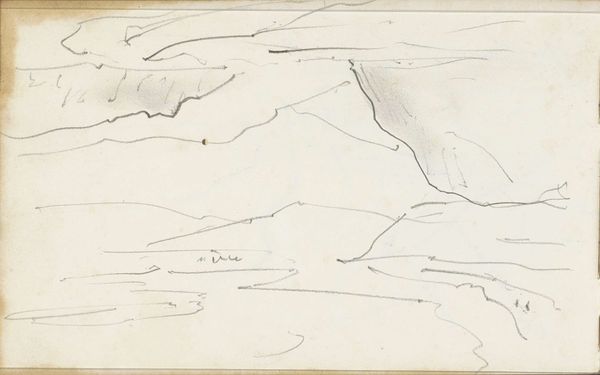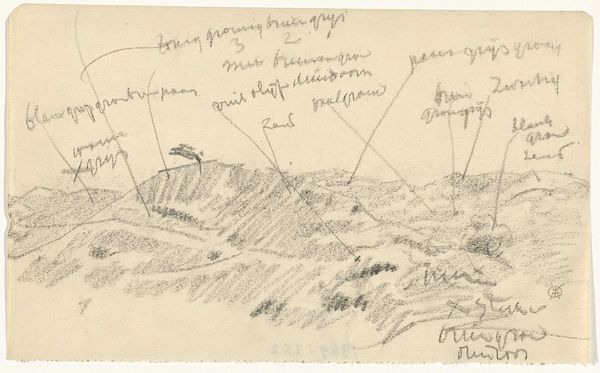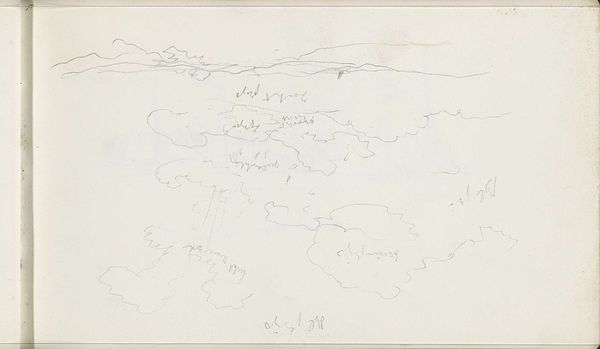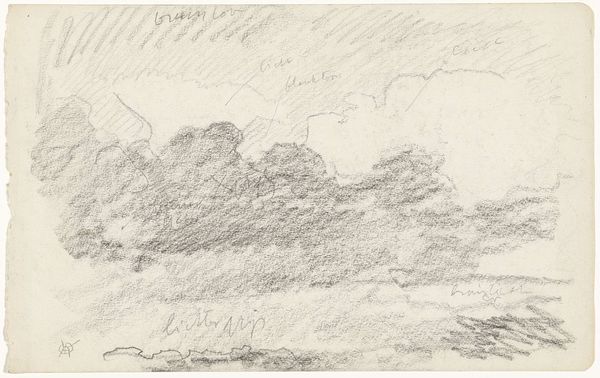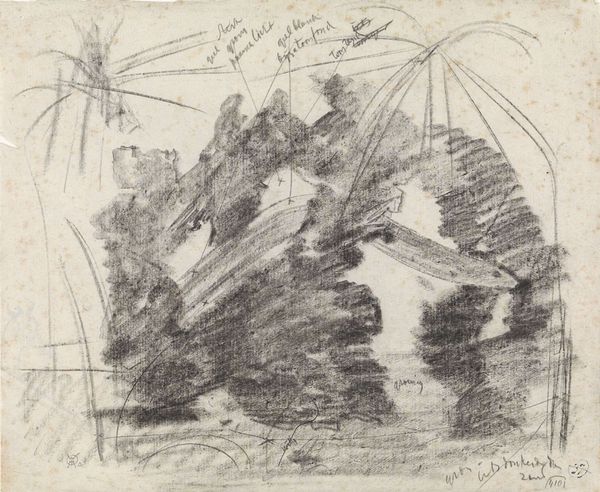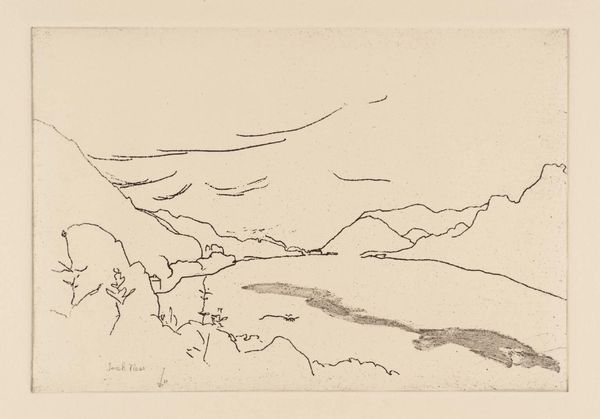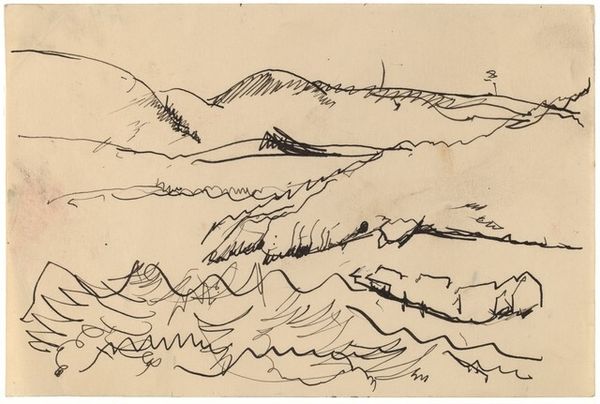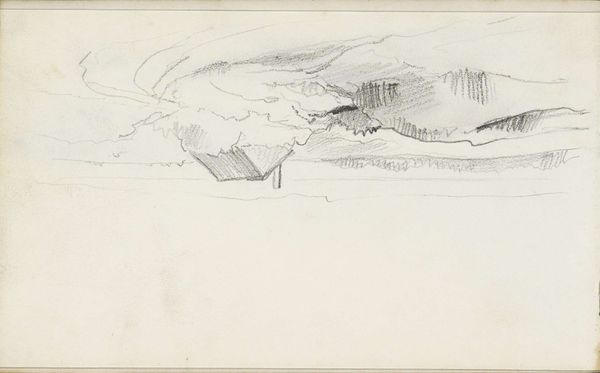
Dimensions: height 169 mm, width 264 mm
Copyright: Rijks Museum: Open Domain
Editor: Here we have Gerrit Willem Dijsselhof’s “Duinlandschap, met kleurnotities,” a landscape drawing made sometime between 1876 and 1924, housed at the Rijksmuseum. It looks like a quick sketch, almost a set of visual notes. What do you see in this piece, in terms of its historical context? Curator: It is indeed a rapid study. Dijsselhof’s landscapes, including this one, participate in the late 19th-century Dutch art scene grappling with national identity. Consider that landscape painting gained immense popularity in the Netherlands as a means of celebrating and defining the nation's character and this artwork becomes quite interesting. Dijsselhof here, instead of going with tradition and producing something grand, takes this spontaneous, note-taking approach to it. I wonder, what does such "rapid landscape art" reveal to a contemporary audience in comparison to monumental works? Editor: That's interesting. I wouldn’t have immediately connected it to such a broad theme, considering how intimate the sketch feels. Does the act of sketching in itself have social connotations from this era? Curator: Absolutely! Sketching was considered both an academic exercise and an amateur pastime. For professionals, the sketch held great value in the era before photography fully captured details; rapid landscape studies functioned almost like location scouting and evidence. Considering this drawing hangs in the Rijksmuseum, it might signify a later elevation of sketchbook art into something considered of cultural importance in its own right. The museum essentially deems a “landscape note” worth preserving, almost like preserving the artist’s thought process. It gives this artwork a double purpose as historical document and a work of art. Editor: So, displaying this challenges earlier hierarchies of finished art versus preparatory sketches? It makes me consider the journey from the natural landscape to the walls of the Rijksmuseum, a fascinating reflection of value and meaning. Curator: Precisely. Perhaps such democratizations of artistic recognition make possible the landscape art of today.
Comments
No comments
Be the first to comment and join the conversation on the ultimate creative platform.

